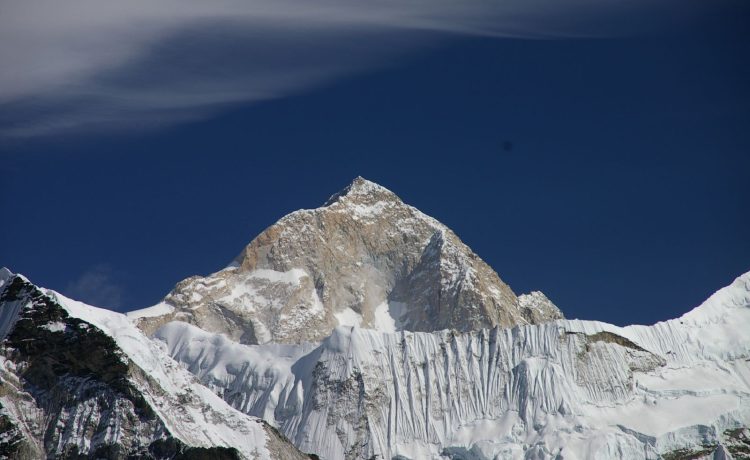maresiliencycenter.org – Nestled in the majestic Himalayas, Makalu stands as the fifth-highest mountain on Earth, reaching an awe-inspiring height of 8,485 meters (27,838 feet) above sea level. This towering peak straddles the border between Nepal and China, offering a breathtaking spectacle for mountaineers and nature enthusiasts alike. Its name, “Makalu,” is derived from the Sanskrit word “Mahakala,” which means “Great Black One,” a fitting moniker for its imposing and dark appearance.
Geographical Significance of Makalu
Makalu is part of the Mahalangur Himalayas, a sub-range of the Himalayas. It is situated approximately 22 kilometers southeast of Mount Everest, the world’s highest peak. The mountain’s massif includes several subsidiary peaks, with the main summit being the most prominent. The rugged terrain and challenging climbs make Makalu a formidable destination for even the most experienced climbers.
The Unique Geography of Makalu
What sets Makalu apart is its striking pyramidal shape, especially when viewed from the north. This feature, along with its steep faces and sharp ridges, makes it one of the most aesthetically pleasing mountains in the Himalayas. The mountain’s northern face is particularly noteworthy, as it drops precipitously for over 3,000 meters, presenting a daunting challenge for climbers.
Historical Overview of Makalu’s Exploration
The first successful ascent of Makalu was achieved in 1955 by a French expedition led by Jean Franco. The team included Lionel Terray and Jean Couzy, who reached the summit on May 15, 1955. This achievement marked a significant milestone in the history of mountaineering, showcasing the human spirit’s indomitable will to conquer the highest peaks.
Subsequent Expeditions and Notable Ascents
Since the initial ascent, Makalu has attracted numerous expeditions, each seeking to conquer its formidable heights. Over the years, climbers have explored various routes to the summit, with the most popular being the Southwest Pillar and the North Col-North Ridge routes. Despite the advancements in climbing technology and techniques, Makalu remains a challenging mountain, with only a select few managing to reach its summit.
Climbing Makalu: A Challenging Endeavor
Climbing Makalu is no easy feat. The mountain’s high altitude, extreme weather conditions, and technical difficulties pose significant challenges to climbers. The ascent typically begins from the Nepalese side, with the base camp located at an elevation of around 4,800 meters. From there, climbers must navigate through several high camps, enduring sub-zero temperatures and the ever-present risk of altitude sickness.
The Role of Sherpas in Makalu Expeditions
Sherpas, the indigenous people of Nepal, play a crucial role in Makalu expeditions. Their expertise in high-altitude mountaineering, coupled with their deep knowledge of the local terrain, makes them invaluable to climbing teams. Sherpas assist with route-finding, setting up camps, and carrying essential supplies, ensuring the safety and success of expeditions.
Environmental Concerns and Conservation Efforts
The increasing popularity of mountaineering in the Himalayas has raised concerns about environmental degradation. Makalu, like other high-altitude regions, is vulnerable to the impacts of climate change and human activities. Conservation efforts are underway to protect the fragile ecosystems of the Himalayas, including initiatives to reduce waste and promote sustainable tourism.
The Future of Makalu and Its Preservation
As the world continues to grapple with the impacts of climate change, the preservation of mountains like Makalu becomes ever more critical. Efforts to limit human impact and promote responsible tourism will be essential in ensuring that future generations can experience the awe-inspiring beauty of Makalu.
Conclusion
Makalu, with its majestic beauty and formidable challenges, stands as a testament to the enduring allure of the Himalayas. For climbers and nature lovers alike, it represents the ultimate test of human spirit and resilience. As we continue to explore and appreciate the wonders of Makalu, it is our responsibility to protect this natural marvel for generations to come.

